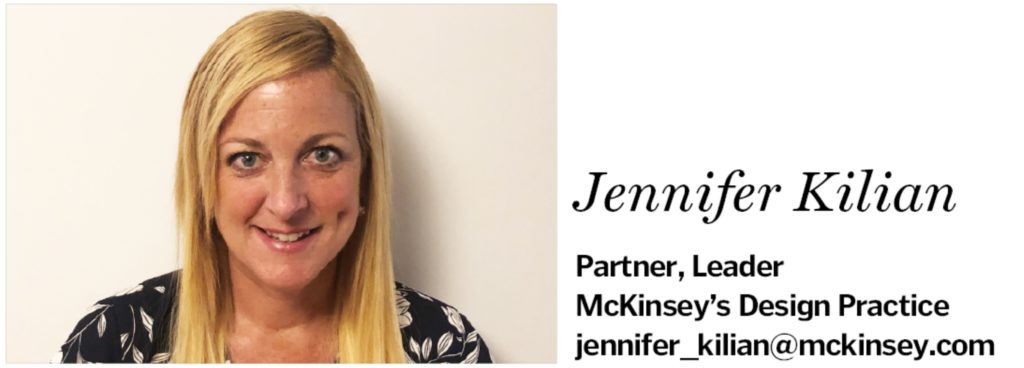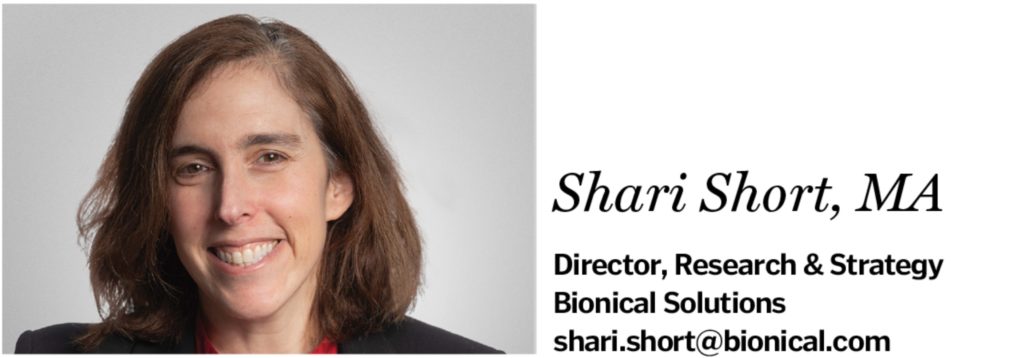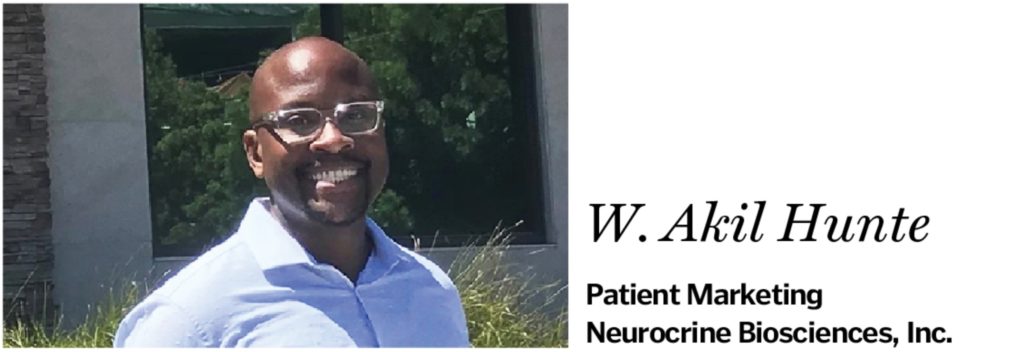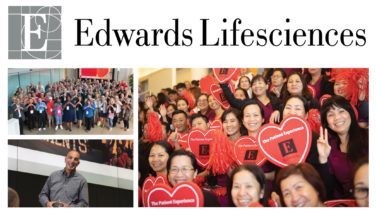At the heart of any successful patient-centric strategy is co-creation. Not just operating your company or brand with a focus on the patient, but finding ways to actually work with patients. Involving them from the very beginning in anything you set out to do to get their input, advice, concerns, help, and expertise. Treating them as partners throughout the entire process and not simply a focus group used for feedback. And while co-creation is a great way to help achieve that, it also comes in many different forms so companies need to choose the best co-creation strategies that work for them. PM360 asked patients, agencies, life sciences companies, and other experts in co-creation:
- What are the keys to successfully co-creating new solutions with patients? What are the best ways to make sure patients are more involved or that their voices are heard when working on new products, programs, or initiatives?
- What barriers or challenges do life sciences companies face when attempting to work with patients? How can these be addressed or overcome?
- What type(s) of design thinking or co-creation techniques do you find work best? Do you have any examples of methods you have tried that have been successful or end-results that have come out of these sessions that have proved successful?
- How can the life sciences industry further improve upon how it currently works with patients? What more can be done or should be done better?
 In the 18+ years I have worked with patients on co-creating new initiatives, one of the most important keys to success is the selection of the patients you are partnering with. Establish program objectives and a list of skills criteria that you feel would be necessary toward that end result. Then gauge potential participants’ level of commitment to improving the quality of life within their patient community. Depending on your budget, at minimum have a phone screening, but optimally it is better to have a face-to-face interview with the patient. Make sure the source of your recruitment is compliant within your own organization’s guidelines. It’s also helpful to level-set the expectations of the patients providing their insights that not every idea can be implemented.
In the 18+ years I have worked with patients on co-creating new initiatives, one of the most important keys to success is the selection of the patients you are partnering with. Establish program objectives and a list of skills criteria that you feel would be necessary toward that end result. Then gauge potential participants’ level of commitment to improving the quality of life within their patient community. Depending on your budget, at minimum have a phone screening, but optimally it is better to have a face-to-face interview with the patient. Make sure the source of your recruitment is compliant within your own organization’s guidelines. It’s also helpful to level-set the expectations of the patients providing their insights that not every idea can be implemented.
Also, be up front with patients regarding the time needed to be involved in the program. And keep in touch with them either face-to-face (at least for the project kick-off) or through teleconference calls so they feel involved. Update them on the progress and challenges and help them be a part of the solutions. Ultimately, make sure everyone agrees and fully understands the goals and what success looks like.
Pharma’s Top Concern About Patient Advocates
The #1 concern: Ensuring patient advocates are compliant, especially if they are speaking to HCPs or other patients within the community. Train them in the guidelines your company has put forward and remind them again and again that they will be tempted to give medical advice, but they must resist it. Also, instruct them in other ways of communicating inspiring messages to others with phrases like, “from my experience…” or “I am not a doctor, but these are the things I discussed with my physician that provided me with other alternatives…”.
 Design thinking, especially in healthcare, is about people. It’s about empowering an equal exchange of ideas and involvement—a practice we often refer to as co-creation. Design welcomes everyone to the table to authentically build relationships and values both our differences and our shared experiences to guide our strategic thinking as marketers.
Design thinking, especially in healthcare, is about people. It’s about empowering an equal exchange of ideas and involvement—a practice we often refer to as co-creation. Design welcomes everyone to the table to authentically build relationships and values both our differences and our shared experiences to guide our strategic thinking as marketers.
The core protocols of design thinking—analogous thinking, persona development, journey and expectation mapping, role play, service shadowing, and, of course, rapid prototyping—are all useful tools that aid the co-creation process. But one component is often overlooked: The practice of extreme stakeholder empathy made possible through ethnography.
The Value of Ethnography
Good design starts with listening to human voices—from patients and carers to prescribers and payers. As such, we recommend companies leverage the science of ethnography, a sub-study of anthropology focused on the empirical study, documentation, and analysis of human cultures. Ethnography is one of the tools of design thinking that can help companies better understand, better engage, and ultimately better empower their patient-focused strategies.
The esteemed anthropologist Margaret Mead is noted as having said, “What people say, what people do, and what they say they do are entirely different things.” In my opinion, this one sentence best summarizes the value of ethnography.
Many brands claim to “know” their customer, but few truly understand them. The resulting gap between knowing and understanding subsequently prevents them from achieving true patient centricity. Ethnography affords us a beautiful framework for empathically engaging patients, and the outputs—in terms of data and thematic understanding—brings to light a clearer pathway for leveraging the tools of design thinking in a manner that bridges these gaps and leads us from a place of merely knowing to a place of deep human understanding.
 Patients should be involved from the beginning—and at every level. Having patients on staff at science companies as patient advocates and then inviting them to every table would be a huge step in the right direction—not just moving someone over from marketing to be a patient officer, but truly an active and eloquent advocate in that disease space. So many of us want to celebrate the work these companies are doing on our behalf, but we are just shouting into the wind.
Patients should be involved from the beginning—and at every level. Having patients on staff at science companies as patient advocates and then inviting them to every table would be a huge step in the right direction—not just moving someone over from marketing to be a patient officer, but truly an active and eloquent advocate in that disease space. So many of us want to celebrate the work these companies are doing on our behalf, but we are just shouting into the wind.
Allow and encourage patients to sit in on meetings even if they might not seem relevant, because it could make a huge impact. Imagine a patient advocate, on staff, joining in a review of a new potential business partner. This interaction could discover untapped connections with that business partner (their wife has breast cancer, their mom has diabetes, etc.) and increase the strength of that relationship. And when you go to pharma events (any events) bring your patient advocates. We have immediate gravitas and are able to eloquently state how far we have come and—more importantly—how bright we see the future!
Opportunities to Better Serve Patients
Besides bringing patients on staff, companies have plenty of other opportunities to help patients. For example, many underserved communities are financially prevented from participation in clinical trials, which is a major impediment. However, covering all costs—including daycare, lost wages, decent meals, entertainment, and transportation—will open the door for countless people who truly want to participate.
And when it comes to co-creating solutions with patients, the process must be honest and pull in patients and advocates from myriad walks of life. Connection with patient co-creators on a regular basis and celebrating wins on social media (where possible) is huge. The more engaged a patient is, the better the result.
 Historically, life science companies’ “consumer strategy” was (1) bring the therapy to market, and (2) get it into the patient’s home via the path of the sales force, the physician, the insurance company, and the pharmacy.
Historically, life science companies’ “consumer strategy” was (1) bring the therapy to market, and (2) get it into the patient’s home via the path of the sales force, the physician, the insurance company, and the pharmacy.
Now the patient is in the driver’s seat—though not fully fathoming their treatment—motoring along with whatever information they absorb. The industry often has to scramble to ensure the outcomes to which they’re committed.
Three particularly thorny issues that arise as a result—and ways life sciences companies might address them—include:
- Erosion of trust. The news cycle is clogged with opioid abuse, price hikes for insulin, the Theranos debacle, etc. Trust gaps may shrink by redirecting the narrative from the costs to produce breakthrough therapies to the marvels of innovation emanating from researchers shaping a better life for us all.
- Patients’ ability to engage. Social determinants of health including socioeconomic status, health literacy, and access to healthful food play pivotal roles in engaging with anyone. Strategy shouldn’t add burdens, so make clear precisely what patients must do, how they can do it, and follow up to ensure they’ve done it. Care coordination isn’t just the job of providers and payers. Now industry is part of the team, leveraging data amassing in the EMR.
- Self-efficacy. Patients believing in their innate ability to achieve goals are better at staying in treatment. Others who aim too high become frustrated when, say, they regain weight as they struggle to get thyroid function under control. The industry can take a more active role in supporting them, communicating what to expect from therapy, day by day, month by month. Conveying incremental benefits to expect in their “new normal” may increase their perception that their drug maker is in their corner.
 As an organization, we seek to understand what patients are experiencing and what is most important to them so that we can better address their unmet needs with innovative approaches. For example, consider our development program for fezolinetant, a non-hormonal, investigational compound being studied for the treatment of moderate to severe hot flashes in postmenopausal women. As part of this program, we took steps to ensure our employees could better understand the impact hot flashes have on women experiencing menopause through the creation of our “Through Their Eyes” initiative. In this experiential pilot, employees followed the stories of real patients through their menopause journey via video. We also gathered relevant insights related to a patient’s journey with hot flashes and other vasomotor symptoms.
As an organization, we seek to understand what patients are experiencing and what is most important to them so that we can better address their unmet needs with innovative approaches. For example, consider our development program for fezolinetant, a non-hormonal, investigational compound being studied for the treatment of moderate to severe hot flashes in postmenopausal women. As part of this program, we took steps to ensure our employees could better understand the impact hot flashes have on women experiencing menopause through the creation of our “Through Their Eyes” initiative. In this experiential pilot, employees followed the stories of real patients through their menopause journey via video. We also gathered relevant insights related to a patient’s journey with hot flashes and other vasomotor symptoms.
Issues Impacting Patient Engagement
One of the biggest barriers to patient engagement: Health literacy. Understanding today’s medicines, with complex modes of action and potential side effects, can be difficult for many people. To help address this, our team evaluated patient-facing materials created across the U.S. organization and we collaborated with several internal teams from brand marketing, corporate communications, regulatory, legal, medical, and development. Together, we built new health literacy standards, icon libraries, and guidelines to ensure future patient-facing materials maximize patient and caregiver understanding of our medicines.
Another challenge: The lack of patient awareness about clinical trials. We collaborated with advocacy groups to launch www.AstellasTrials.com, a website with patient-friendly information on company-sponsored clinical trials. While increasing awareness is crucial, we also need to ensure the clinical trial experience itself is positive. We have gone back to patients who participated in previous trial phases to better understand their experience, distinct from the investigational medication. This actionable feedback has helped future clinical efforts to reduce burden and ensure we were optimizing patient experience.
 Combining quantitative and qualitative research greatly enhances the insights generated in your dealings with patients and creates a robust understanding of patient needs and how to address them.
Combining quantitative and qualitative research greatly enhances the insights generated in your dealings with patients and creates a robust understanding of patient needs and how to address them.
Qualitative user research includes ethnographic interviews that are conducted 1:1 in patient homes. They provide a deep understanding of how the disease and treatment impact the patient and caregivers’ lives, highlighting challenges and opportunities. Personas are then developed to identify amalgamations of patients’ behaviors at a group level, enabling you to reach a variety of patients with solutions that best address them. And patient journey maps identify the patient’s self-described journey from feeling ill, through diagnosis and treatment or disease management. Together, all of these tactics enable you to identify gaps, challenges, and opportunities. You can then solve for new products or services to create an ideal future state journey for the patients.
Quantitative research enables you to put numbers behind the needs and preferences you are identifying. For example, quantifying and segmenting the number of patients who are impacted by the challenges at each step of the journey helps identify where solutions can help more patients and quantifies the market size of the opportunity. Another quantitative tool is surveying, which quantifies the impact each feature of the solution will have on the patient experience, enabling you to focus on the highest impact features.
 When it comes to co-creating, timing is everything. Many successful patient co-creation initiatives were direct byproducts of asking patients about unmet needs. Instead of going to patient communities with programs or products, go to them first with a notepad and curiosity—think “how can we help?” opposed to “would you use this?” Also, consider:
When it comes to co-creating, timing is everything. Many successful patient co-creation initiatives were direct byproducts of asking patients about unmet needs. Instead of going to patient communities with programs or products, go to them first with a notepad and curiosity—think “how can we help?” opposed to “would you use this?” Also, consider:
- Who’s at the table? Recruit patients who have not been part of these types of research efforts in the past. Diversity in the patient population is key but consider “participation diversity.” A mix of patients who have and have not been vocal can ensure new voices and validation at the same time.
- Understand the tapestry. The patients involved in co-creation will likely vary in a host of demographics and psychographics. Cultural competency, generational differences, learning preferences, and levels of both health literacy and numeracy play significant roles in group composition. Take into account that even though the patients may share a common health condition, they vary in how they wish to communicate about it.
- Offer multichannel venues for participation and feedback. Online focus groups, mobile survey apps, annual conference scholarships, and in-person catered workshops offer patients the flexibility of time and medium to provide their insights. Be as flexible with timelines as possible as patients can have unanticipated setbacks or intense side effects.
- Ensure those working directly with patients have experience with this population. Language, empathy, and patience are critical components of successful communication. Patients may be offering their time and insight, but they are not vendors nor mainstream market research participants.
- Make evaluation materials user-friendly and engaging. Providing feedback can be both empowering for the patient as well as fatiguing. Use icons, colors, and simple language in your research tools to ensure quality data collection.
 The biggest challenges for life sciences companies when working with patients include building trust and relationships among patients and ensuring those patient relationships include diversity. In my experience as a patient researcher and consultant, patients who are considering working with life sciences companies want to know these companies are in it for more than the millions of dollars associated with the industry. Patients want to feel secure that if a life sciences company is attempting to work with them, it is because the company wants to understand the disease from the patient perspective in ways that are not necessarily treatment related.
The biggest challenges for life sciences companies when working with patients include building trust and relationships among patients and ensuring those patient relationships include diversity. In my experience as a patient researcher and consultant, patients who are considering working with life sciences companies want to know these companies are in it for more than the millions of dollars associated with the industry. Patients want to feel secure that if a life sciences company is attempting to work with them, it is because the company wants to understand the disease from the patient perspective in ways that are not necessarily treatment related.
How the Industry Can Improve its Relationship with Patients
Life sciences companies can build trust by engaging in patient events such as walks, building patient online platforms, promoting improved patient care, and including the patient perspective in marketing and creation of medical devices. Patients want to know that the quality of life is essential to life sciences companies, and this includes aspects outside of treatment. The other barrier is the lack of diversity when it comes to building relationships among patients. In many situations where I’ve dealt with life sciences companies, I was the only person of color in the room, which is problematic. Life sciences companies need to work to add diversity to their patient panels, patient relationships, and marketing materials.
 For me, working with patients always comes down to relationship building. The more they trust you, the more open they will be about how they feel and what they need. I definitely try to listen first rather than project my preferences or ideas on to the patient.
For me, working with patients always comes down to relationship building. The more they trust you, the more open they will be about how they feel and what they need. I definitely try to listen first rather than project my preferences or ideas on to the patient.
For a project I recently worked on, we partnered with local advocacy groups to conduct listening sessions with Tardive Dyskinesia patients to better understand their individual journeys. In those sessions, we realized that patients in this condition category tended to self-isolate and were very unlikely to have met someone else with the condition.
We quickly transformed the listening sessions from individual interviews to group sessions. As a group, the patients felt more comfortable and opened up more, which allowed us to gain more insights for the materials we were looking to develop.
Overcoming Pharma’s Barriers to Working with Patients
Every so often we have to learn to get out of our own way. I’ve seen some companies approach patient activities with too many pre-conceived notions. We make assumptions about patients as a group in terms of their functionality, savviness, and knowledge. I’ve learned that I need to let the patients guide me in many instances rather than the other way around. And in many occasions, the final output of a project took a different direction than we originally intended.
Having the flexibility to move where the market research or stakeholder information directs you is key. I’ve worked on projects where the objective was to communicate the patient perspective, but the tactical execution shifted once we understood more about the patients and the audience we intended to speak to.
 Science is inherent in the industry’s DNA, and therein lies the challenge and the opportunity for improvement. For an industry focused on the science of medicine, it’s easy to forget the art of communication. At the heart of patient centricity is communication. Embracing the principle of ongoing information sharing with patients, caregivers, and healthcare providers drives the development of solutions that help patients achieve optimal health. As healthcare marketers and healthcare providers, we have the obligation to integrate this art into our treatment models to improve responsiveness to our patients and to develop the support programs that truly meet their needs along their treatment journeys.
Science is inherent in the industry’s DNA, and therein lies the challenge and the opportunity for improvement. For an industry focused on the science of medicine, it’s easy to forget the art of communication. At the heart of patient centricity is communication. Embracing the principle of ongoing information sharing with patients, caregivers, and healthcare providers drives the development of solutions that help patients achieve optimal health. As healthcare marketers and healthcare providers, we have the obligation to integrate this art into our treatment models to improve responsiveness to our patients and to develop the support programs that truly meet their needs along their treatment journeys.
Successful Patient Communication
Putting the patient at the center of what we do doesn’t start and stop when the patient is recruited for a clinical trial or a script is filled at the pharmacy. This patient-minded approach needs to be embraced by the entire organization. It requires that all partners in the caregiving spectrum be committed to focusing on the entire treatment journey and to working together across departments to develop practices and programs with the goal of producing positive outcomes for patients. To succeed, communication needs to be continuous—with our colleagues and our patients. Let’s not forget that today’s patients are motivated information seekers. They want to be part of their treatment solutions, and we need to ensure we communicate with them at every stage of their journey.
By continuously engaging with patients, committing to truly listening, and having the willingness to respond and take ownership at each touchpoint, we can improve how we deliver healthcare and value to patients. This is how great outcomes are achieved—by strong relationships and operational excellence.
 One major challenge is helping HCPs truly understand the patient mindset, their emotional reactions to their disease, and the patient journey at various disease milestones. The patient journey allows an HCP to understand what “A Day in the Life” means to the patient. This is especially important when the disease is less common than heart disease, diabetes, or breast cancer, where everyone knows someone with one of these conditions. Understanding the patient journey pulls the HCP into the patient’s world and helps them identify, humanize, and empathize with the patient.
One major challenge is helping HCPs truly understand the patient mindset, their emotional reactions to their disease, and the patient journey at various disease milestones. The patient journey allows an HCP to understand what “A Day in the Life” means to the patient. This is especially important when the disease is less common than heart disease, diabetes, or breast cancer, where everyone knows someone with one of these conditions. Understanding the patient journey pulls the HCP into the patient’s world and helps them identify, humanize, and empathize with the patient.
When mapping out patient journeys, the goal is to identify key milestones to improve patient engagement and satisfaction. For example, in one recent journey we mapped, four milestones were identified: 1) Awareness; 2) Trial and Usage; 3) Evaluation; and 4) Advocacy. Then, within each milestone, you must identify unmet needs and potential opportunities, as well as strategic insights, to create meaningful interactions with patients. And, once you understand what the patient is going through, you can better arm the HCP to be more effective.
Establishing a Balanced Focus
Also, important to note: This process is not a one-size-fits all situation. We cannot underestimate the different emotions and mindsets that patients have. The more deeply we understand the varying patient types—their nuances and most meaningful moments—the better we can help to inform their physicians.
For many years, the industry created messages and collateral that was HCP focused. The pendulum has recently shifted, and the buzz now is that things need to be patient focused. Actually, improving patient care must establish a balance between a patient focus and an HCP-focused approach. In creating this balance, the patient and the HCP will develop a common language and understanding of the journey.
 Life sciences companies forget they are dealing with individual human beings, not simply lab results or patient numbers in an electronic medical record. In their noble quest to cure illness (or more pragmatic drive to create effective, profitable, treatments), they become overly committed to their solutions.
Life sciences companies forget they are dealing with individual human beings, not simply lab results or patient numbers in an electronic medical record. In their noble quest to cure illness (or more pragmatic drive to create effective, profitable, treatments), they become overly committed to their solutions.
What if solving an asthma crisis wasn’t a new inhaler, but instead understanding the stressors urban parents face trying to provide breathable air and allergy-proofed housing for their kids? What if the obesity problem is less about wellness choices made, but instead the lack of choices available? What if a patient’s gastrointestinal issues were really PTSD? What if we stopped only solving to avoid symptoms and started listening for the root cause?
It’s easy to distort the two. Listening for the sake of hearing is hard. Listening without a solution in mind is even harder. Truth is, we must humbly return to the simplicity of listening to the human who has a problem. Only then should we ask ourselves—are we making assumptions? Are we so in love with our own version of their problem and therefore our solution that we forget the real problem?
Perhaps we are the obstacle and the problem isn’t impossible to solve if we’re solving the real problem. How do we start? By listening to the people you’re trying to help and doing a gut check about your own motivations.
Did you spend a long time on an idea that would be cool to share at the conference or would get you a new patent? So what. It’s not about the tools. It’s about the outcome—the patient outcome.
Stop assuming the facts around a patient’s situation or that what works for one will work for all. Tell process where to shove it, and spend your time listening to the stories.






